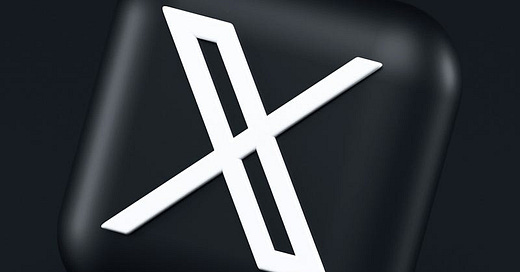How To Find What Your Twitter Competitors- Are Doing That You Can Mimic
In parallel with creating a presence on Twitter, you should also figure out what your competitors are doing in the world of micro-blogging. When I started studying competitors, it was a huge eye-opener for me. Competitive research is awesome because it can open up new opportunities you never knew about before.
"To create a competitive analysis report for Twitter, start by finding out who among your competition is using Twitter. Determine the area of influence for your competitors to understand where you stand in comparison to them. This will help you figure out what steps your competitors are taking to use Twitter for lead generation. Roll up your sleeves and see what your competitors are doing that you can mimic or improve upon."
In this case, I'll explain two ways you can get this information:
For a single individual competitor
For the competitor companies that are using Twitter in your business niche.
For number 2, the best way is to use a tool called Twellow. Twellow, also known as the Twitter Yellow Pages, is a service available at here. It allows you to search for a specific name on Twitter. By using Twellow, you can easily find which companies are using Twitter in your business niche.
After you find the Twitter name of all your competitors by entering a personal or company name into Twellow, try your search with and without spaces. The two searches may return different results, all of which are typically useful. Once you have the Twitter names of your competitors, the next step is for a single individual competitor.
First: for more about Competitors (Both Direct AND Indirect) clickhere.
Right now, your followers are where your competitors’ followers are. So, that’s where you need to start looking. I’m going to show you how to dig up all this awesome information. Here’s a simple logic I used:
Click or view your follower’s profile. Look for an icon resembling a bell with a plus sign (usually on the right-hand side). Click or tap on the bell icon to access your follower notifications.
Once the notifications bell shows a good sign, you can receive interactions such as mentions, likes, retweets, replies, and other activities related to your follower’s Twitter account.
This will give you a good idea of who your successful competitors are engaging with and what they are doing. Follow the actual person to whom your competitors comment or reply, and model them for your own Twitter.
If your competitors drop a comment, follow that person and drop a comment too. If your competitors engage in a conversation, track that conversation and engage as well.
You don’t even need to send random comments. This simple strategy will serve as a way to use your competitors as a roadmap.
In less than five minutes, you can learn everything you need to know about a competitor’s campaign using this simple strategy, saving you hours.
Isn’t it amazing? You can replicate everything your competitor is doing in less than ten minutes.
Just click on the bell with the plus sign and go where they have already gone. Engage with the followers who have already shown interest in your competitor’s account. Redirect them to engage with your account!
By following these steps, you can gain insights from your competitors' interactions and use that knowledge to enhance your own Twitter strategy.
To find out what steps your competitors are taking to use Twitter for lead generation, here are some effective strategies:
Start by identifying your main competitors on Twitter and follow their accounts. Pay attention to their tweets, engagement with followers, content they share, and overall strategy. Look for patterns or trends in their posts and interactions that indicate successful lead generation techniques.
Track how your competitors engage with their Twitter followers. Look for instances where they respond to comments, retweet or mention followers, and initiate conversations. Pay attention to the tone and style of their interactions. This can give you insights into their approach to building relationships and nurturing leads on Twitter.
If your competitors are running Twitter ads, study their ad campaigns. Look for the types of ads they are running, the targeting criteria they use, and the landing pages associated with the ads. This information can provide insights into their paid lead generation tactics on Twitter.
Keep an eye on industry-specific keywords and hashtags relevant to your niche. By monitoring these keywords and hashtags, you can identify your competitors' Twitter activities, engagement with prospects, and lead generation efforts within the industry.
For more Twitter strategies click here
Until Next Time-Lukman your new marketing buddy at aufbau..
Finally, if you enjoyed those ideas, you might like my popular P-s+u=s newsletter as well.
If you’re interested, you can check out our controversial tips sample in our newsletter here.
P.S. Reply to this article with any word, phrase or question you want. The weirder the better.
(That way I won’t end up in your Medium & we can become best friends.)




